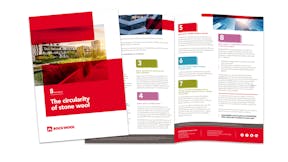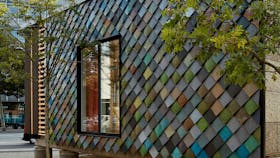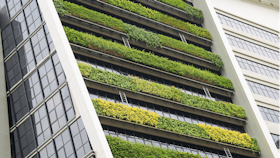The coming renovation wave in the EU will be a unique opportunity for cities inside the member states to review and improve their resilience plans to create a more sustainable society for the future. One method that has emerged, based on the planetary boundaries model, is the “doughnut model” of economic, social, and ecological transformation, now also scaled to city level.
The ‘city doughnut’ provides a tool for cities to plan and drive transformative action while staying within the planetary boundaries and creating a safe, sustainable, and quality existence for all citizens.
Amsterdam is the first city that has used the doughnut model, attempting to transition to a completely circular economy with the aim to become a climate-neutral capital by 2050. Creating a resilient, sustainable, and carbon-neutral urban environment that serves all citizens may be a lofty goal, but is possible with modern technologies, social integration, and economic support from local governments.
What is the city doughnut strategy?
Kate Raworth, the research associate at Oxford University who developed the doughnut model, describes it in her book ‘Doughnut Economics: Seven Ways to Think Like a 21st Century Economist.’ The model is a new way to look at sustainable development, creating a boundary between a city’s ability to provide a social foundation (the hole) for populations while not exceeding the ecological ceiling (the outside). Staying inside these parameters represents the doughnut. It is a set of strategies and policies to help create a circular economy. She has since downscaled the model to a city level that Amsterdam will pilot for its post-pandemic recovery.
A city doughnut addresses the way we produce, consume, and process resources every day. In Amsterdam, the idea of a thriving city is becoming synonymous with sustainable supplies, responsible use of natural materials, and maximizing the useful life of products to reduce waste wherever possible. They aim to use the city doughnut to create the ideal economic conditions required for innovation from companies in every business sector.
By changing the perspective of the city’s supply chains, value systems, and resilience against the effects of climate change, the doughnut model provides a workable framework for planning for future sustainability and evaluating progress. It offers a way to recognise and respond to a planetary view of the earth and its resources, similar to the message of Carl Sagan’s concept of the ‘Pale Blue Dot.’ A sustainable future depends on a healthy population capable of responding, recovering, and limiting the effects of climate change to protect future generations.
Using this model, Amsterdam aims to:
- Transition to 100 percent circular and climate-neutral city by 2050.
- Adopt a smarter approach to the extraction, production, and consumption of raw materials.
- Create more jobs for citizens through transformative action and promoting sustainable practices.
The city doughnut model in action
To achieve their goals, Amsterdam’s policy-makers identified three priority value-chains in their strategy. The aim is to address both future sustainability and real-world challenges that inhabitants face every day. The priority value-chains identified include:
- The built environment – Reducing energy consumption, providing healthier indoor climates, and promoting the use of circular materials to help sustain societies now and into the future.
- Consumer goods and consumption – Ensuring the products we consume have a smaller environmental footprint while optimising future production for reusability.
- Optimising food and organic waste streams – Effectively controlling the entire lifecycle of materials and maximising use by reducing waste of consumer goods, food products, and building materials.
Using this new perspective about their economy, Amsterdam aims to cut food waste by 50 percent over the next ten years. Stricter building regulations will also enforce future sustainability by requiring a “materials passport,” helping demolition companies and construction firms determine whether their building materials are reusable and, as such, more valuable. The municipality wants to cut its use of raw materials by 20 percent by 2030.

It’s time to build a better future
To meet the Paris Climate Agreement’s goal of keeping the temperature rise well below 2°C, we need to act now










